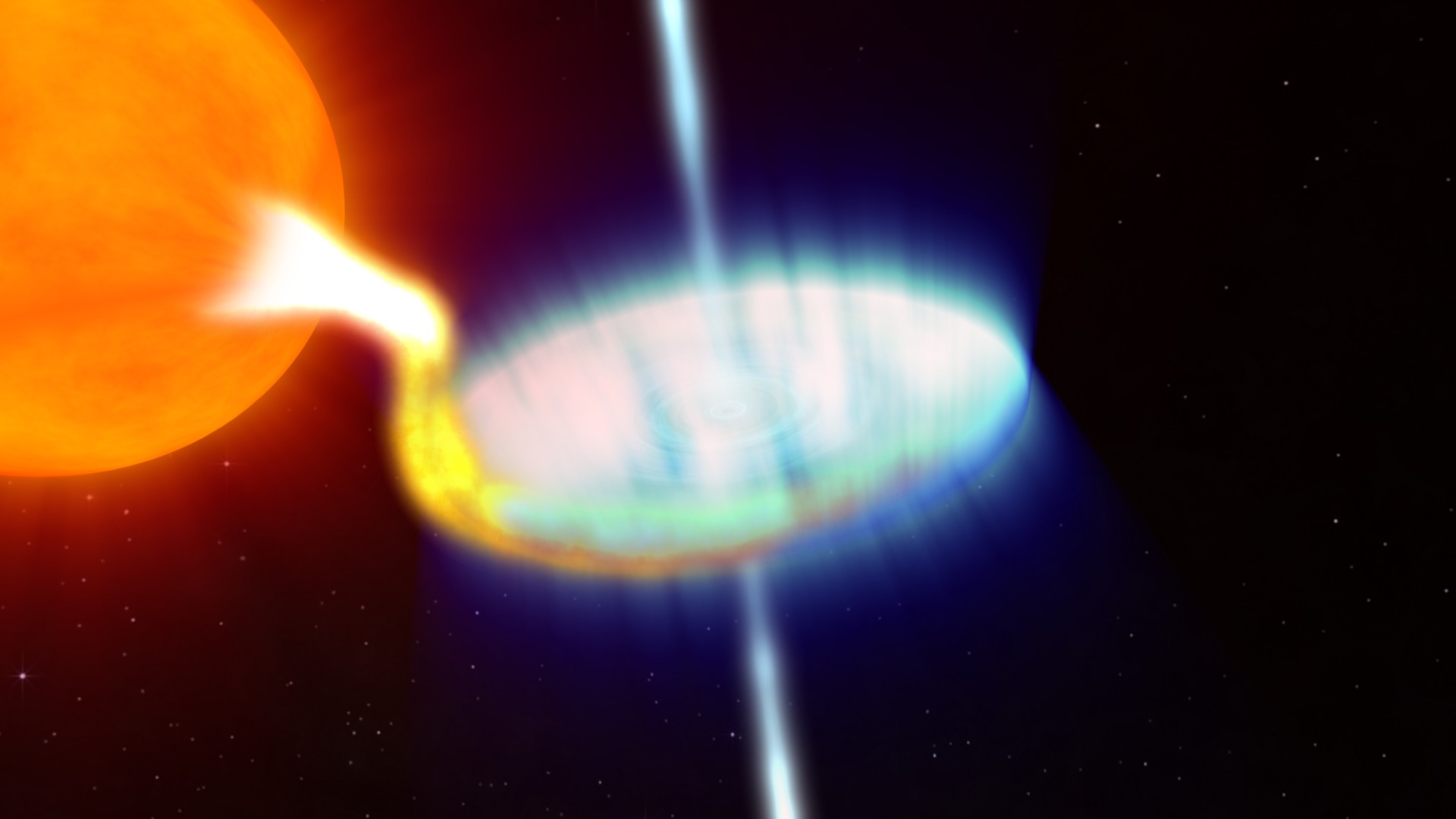X-ray Nova Reveals a New Black Hole in Our Galaxy
On Sept. 16, NASA's Swift satellite detected a rising tide of high-energy X-rays from a source toward the center of our Milky Way galaxy. The outburst, produced by a rare X-ray nova, announced the presence of a previously unknown stellar-mass black hole.
An X-ray nova is a short-lived X-ray source that appears suddenly, reaches its emission peak in a few days and then fades out over a period of months. The outburst arises when a torrent of stored gas suddenly rushes toward one of the most compact objects known, either a neutron star or a black hole.
Named Swift J1745-26 after the coordinates of its sky position, the nova is located a few degrees from the center of our galaxy toward the constellation Sagittarius. While astronomers do not know its precise distance, they think the object resides about 20,000 to 30,000 light-years away in the galaxy's inner region. The pattern of X-rays from the nova signals that the central object is a black hole.
Ground-based observatories detected infrared and radio emissions, but thick clouds of obscuring dust have prevented astronomers from catching Swift J1745-26 in visible light.
The black hole must be a member of a low-mass X-ray binary (LMXB) system, which includes a normal, sun-like star. A stream of gas flows from the normal star and enters into a storage disk around the black hole. In most LMXBs, the gas in the disk spirals inward, heats up as it heads toward the black hole, and produces a steady stream of X-rays.
But under certain conditions, stable flow within the disk depends on the rate of matter flowing into it from the companion star. At certain rates, the disk fails to maintain a steady internal flow and instead flips between two dramatically different conditions — a cooler, less ionized state where gas simply collects in the outer portion of the disk like water behind a dam, and a hotter, more ionized state that sends a tidal wave of gas surging toward the center.
This phenomenon, called the thermal-viscous limit cycle, helps astronomers explain transient outbursts across a wide range of systems, from protoplanetary disks around young stars, to dwarf novae - where the central object is a white dwarf star - and even bright emission from supermassive black holes in the hearts of distant galaxies.
Sequence of high resolution stills of Swift J1745-26 from September 13 to September 26, 2012.
Credit: NASA/Goddard Space Flight Center/S. Immler and H. Krimm

Swift J1745-26 with labels and scale of moon as it would appear in the field of view from Earth. This image is from September 18, 2012 when the source peaked in hard X-rays.
Credit: NASA/Goddard Space Flight Center/S. Immler and H. Krimm

Swift J1745-26. This image is from September 18, 2012 when the source peaked in hard X-rays. No Labels
Credit: NASA/Goddard Space Flight Center/S. Immler and H. Krimm
For More Information
Credits
Please give credit for this item to:
NASA/Goddard Space Flight Center. However, individual images should be credited as indicated above.
-
Animators
- Michael Lentz (USRA)
- Scott Wiessinger (USRA)
-
Video editor
- Scott Wiessinger (USRA)
-
Narrator
- Scott Wiessinger (USRA)
-
Producer
- Scott Wiessinger (USRA)
-
Scientists
- Stefan Immler (UMCP)
- Hans Krimm (USRA)
-
Writers
- Francis Reddy (Syneren Technologies)
- Scott Wiessinger (USRA)
Missions
This page is related to the following missions:Series
This page can be found in the following series:Tapes
The media on this page originally appeared on the following tapes:-
Flaring Black Hole
(ID: 2012103)
Thursday, October 4, 2012 at 4:00AM
Produced by - Robert Crippen (NASA)
Datasets used
-
[Swift]
ID: 217
Note: While we identify the data sets used on this page, we do not store any further details, nor the data sets themselves on our site.
Release date
This page was originally published on Friday, October 5, 2012.
This page was last updated on Wednesday, May 3, 2023 at 1:52 PM EDT.
